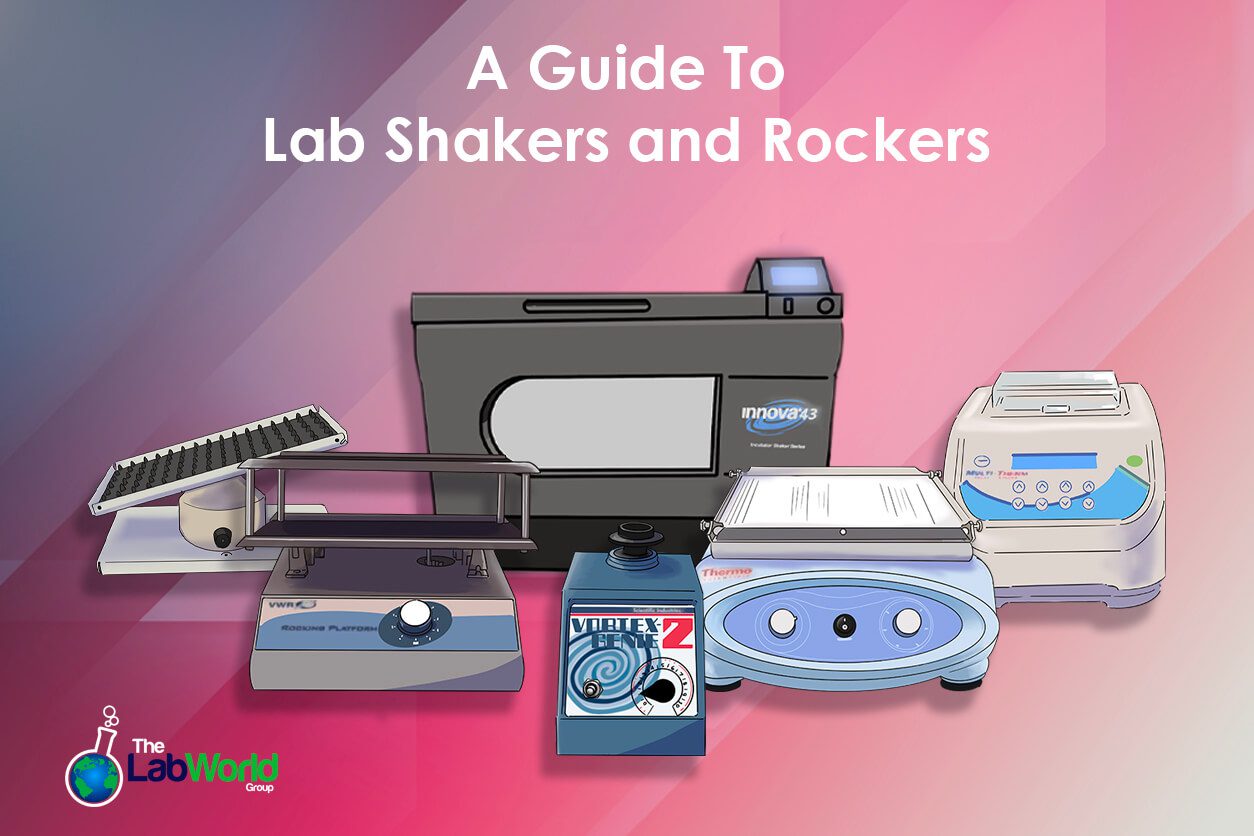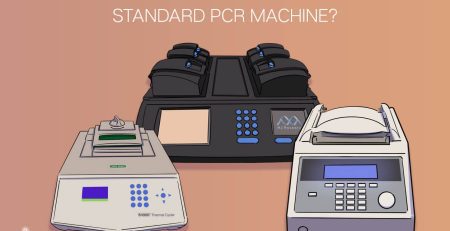
A Guide to Lab Shakers
Amanda2024-07-17T14:01:17+00:00Agitation is essential in chemistry and biology labs, whether to homogenize heat or components in a mixture, activate a catalyst, or aerate a solution. In their many forms, lab shakers help ensure uniformity in results, significantly impacting efficiency and accuracy. They are essential tools in scientific research and medical laboratories. Here, we’ll look into the history of shaking in the lab, different types of lab shakers, their applications, and notable manufacturers.
History of Laboratory Shakers
Until the early 20th century, agitation in the lab was performed manually with rudimentary machines. In 1917, Richard Stringham created and patented the first hotplate shaker to alleviate this most mundane task. The idea was further innovated in 1940 when it was found that the magnetic bar would react with the chemicals in a solution and alter the reaction. Coating the magnetic bar in ceramic, plastic, or glass was inert, and mixing could proceed without reacting. This innovation was developed parallelly in New Jersey by Arthur Rosinger and in Scotland by Edward McLaughlin without either party’s knowledge. McLaughlin dubbed his stir bar a “flea” thanks to how it jumped around in a mixture, and the name stuck.
More electric shakers emerged in the mid-20th century from newly founded companies like New Brunswick, IKA, and Scientific Industries, transforming laboratory practices by offering more precise and consistent agitation. Today, laboratory shakers have evolved into sophisticated instruments with programmable settings and digital controls to cover a wide range of uses in the lab.
Shakers in the Laboratory
Shakers appear in a variety of lab environments. In microbiology, continuous agitation provides uniform growth conditions for bacterial cultures. In a biochemistry lab, laboratory shakers mix reagents and help dissolve solutes critical for enzyme reactions and protein studies. In pharmacology, they help ensure the homogenous mixing of compounds and reagents vital to drug development. In environmental sciences, shakers are used for soil and water sample analysis so that samples are adequately mixed for accurate testing.
The Many Types of Laboratory Shakers
After the humble beginning with magnets, lab shakers have evolved into many forms, each geared to a specific outcome. Orbital shakers use a circular motion to swirl a solution in a vessel. The action can be gentle or vigorous, preferably featuring a slow start function to avoid sloshing. This type of action is ideal for cell culture, bacterial growth, and solubility studies, as the solutions don’t collide with any surface.
Platform, reciprocal, and linear shakers glide back and forth on one axis, using the container wall to break against. This more vigorous action is ideal for DNA extraction and protein studies. Some shakers can do either orbital or reciprocal for added flexibility.
Rotating and rocking Shakers move samples around a central axis, making them perfect for hybridization and washing blots. These feature adjustable tilt and create a gentle but effective wave oscillation back and forth. Nutating mixers rotate on all sides in a three-dimensional action that avoids foaming.
Vortex Shakers work quickly with small volumes, such as a test tube, that need thorough mixing, such as resuspending cells after centrifuging or prepping samples. By making a whirlpool-like action, liquids are forced down through the center and up the sides.
Shaking Plus…
Uniform and automated shaking is a necessary step in the lab. Still, instruments incorporating heat into the equation work with specialty labware or can be used in specialized lab environments, making them even more necessary and versatile.
Incubator shakers are double-duty instruments housing an orbital or reciprocal shaker in a temperature-controlled environment. They are essential for growing cell cultures and fermentation processes and can range in size from smaller benchtop thermoshakers to very large stackable systems like the Innova Series from Eppendorf. Heated incubator shakers are used to grow thermophiles, while cooled shakers are used for tasks like gene expression.
Shakers can also be specially built to operate within a larger controlled lab environment, such as a cold room, with components that tolerate a more comprehensive range of temperatures, either high or low, and resist degradation from exposure to CO2 like an incubator. A shaking function can also be found in lab instruments such as microplate readers and water baths.
Lab Shaker Manufacturers
Many companies offer reliable and specialized shakers of all types. With such a robust selection, users can find the exact motion, speed, and level of control along with their preferred interface. Thermo Fisher Scientific shakers are precise and reliable. They offer various shakers, from small benchtop models to large, high-capacity units. VWR also has a variety of mixing solutions, including many that are rated to work in a cold room.
New Brunswick offered the first version of the New Brunswick Shaker in 1949 and has been innovating ever since, adding microprocessor control and programmable multi-step protocols. NBS and Eppendorf shakers are favored for their innovative design and advanced features.
Kuhner began offering shaking cabinets and stackable incubator shakers in the 1980s and 90s, allowing higher throughput without taking up space in the lab. Scientific Industries is known for the ubiquitous vortex genie 2, a staple in most labs. Boekel Scientific offers a Flask Dancer Shaker built for long periods, up to 99 hours, of operation. Other notable manufacturers include IKA Works, which offers durable vortexing and magnetic hotplates; Benchmark, with its affordable high-performance shakers ideal for educational environments; and user-friendly Labnet mixers.
Conclusion
Laboratory shakers are critical tools that enhance the efficiency and accuracy of scientific research. Their evolution from manual devices to sophisticated instruments shows how innovation keeps pace with necessity and shows no signs of slowing. With various types tailored to specific applications and a range of respectable manufacturers providing high-quality products, these devices continue to be integral to achieving reliable and reproducible results in the lab.
Whether for culturing cells, mixing solutions, or shaking samples, lab shakers and mixers have you covered, and so do we. Over the years, we’ve carried many lab shakers, rotators, mixers, and shaking incubators from all the top manufacturers. Our inventory continually changes, so check back often if you don’t see the tool that meets the task. Contact us, and let us get you started.













